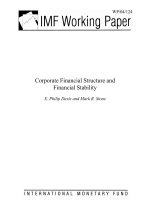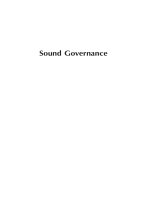Sinusitis Health Promotion and Education Program ppt
Bạn đang xem bản rút gọn của tài liệu. Xem và tải ngay bản đầy đủ của tài liệu tại đây (273.03 KB, 20 trang )
Health Promotion and Education Program
Sinusitis
Objectives
At the end of the tutorial, the participants
will
be able to:
• Define in their own words what sinusitis
• Recognize at least three (3) symptoms of
sinusitis
• Mention at least two (2) sinusitis risk
factors
Objectives
At the end of the tutorial, the participants will
be able to:
• Mention at least two (2) diagnostic tests for
sinusitis
• Identify at least two (2) types of treatments
used to manage sinusitis
• Express at least three (3) recommendations
to control sinusitis
Pre test
1. Sinusitis causes _________of the nasal
cavities:
a. Inflammation
b. Obstruction
2. Sinusitis symptoms include:
a. Fever, congestion, and runny nose
b. Weakness , ear and mouth pain
Pre test
3. The treatment for sinus control includes:
a. Use of decongestants and nasal
sprays
b. Use of bronchodilators
Introduction
• Sinusitis is an inflammation of one o more
of the paranasal sinus
• The main functions of these sinuses are
to warm, moisten and filter the air in the
nasal cavity
• As well as perform an important role in
our capability for vocalize certain sounds
What is sinusitis?
• An inflammation of the nasal cavities as a
consequence of a common could or an allergy
complication
• When the internal nose cover and sinus are
infected, sinusitis causes inflammation and
generate an excess of mucus
What is sinusitis?
• When the sinuses are block and filled with
fluid, germs can grow and make you feel
sick
• Sinusitis can occur occasionally or
presented in a prolonged period,
especially in the cold season.
Sinusitis types
Sinusitis were classified in a variety of
types, such as:
• Acute- the symptoms can persist four
weeks or less
• Sub acute- the symptoms can persist four
to eight weeks
• Chronic- the symptoms can persist eight
weeks or more
Symptoms
Sinusitis can provoke:
• Yellow or green mucus coming from the
nose or down the throat
• Bad taste or bad breath
• Nasal congestion
• Pain or pressure in the face
Symptoms
Sinusitis can provoke:
• Cough
• Headache
• Fever and shiver
• Inflammation around the eyes and cheeks
• Tiredness and fatigue
Diagnosis
To realize a correct diagnose the doctor can run
a
physical exam and a several diagnostic tests,
such as:
• Allergy tests
• X rays of the nasal sinus
•
Axiliar
tomography (presents the imaging of
the sinus cavities)
Treatment
The treatment for sinus control can include:
• Use of medicines, such as:
-Decongestants
-Nasal washes with saline or salted water
• Surgery – is only considered when the
prescribed treatment doesn’t work
Preventive measures
To avoid sinusitis development it’s
important to:
• Get vaccinated against the Influenza virus
annually
• Wash your hands with antibacterial soap
and water frequently
• Eat fruits, because they are rich in
antioxidants and reinforce your immune
system
Preventive measures
• Avoid exposure to cigarette smoke
• Avoid contact with hair and animal dander
• Maintain your home clean, avoiding dust
accumulation
• Avoid the use of carpets inside home
Remember…
• Treat allergies in appropriate manner,
following your physician’s
recommendations.
Post test
1. Sinusitis causes _________of the nasal
cavities:
a. Inflammation
b. Obstruction
2. Sinusitis symptoms include:
a. Fever, congestion, and runny nose
b. Weakness , ear and mouth pain
Post test
3. The treatment for sinus control includes:
a. Use of decongestants and nasal
sprays
b. Use of bronchodilators
Correct answers
1. Sinusitis causes _________of the nasal
cavities:
a. Inflammation
b. Obstruction
2. Sinusitis symptoms include:
a. Fever, congestion, and runny nose
b. Weakness , ear and mouth pain
Correct answers
3. The treatment for sinus control includes:
a. Use of decongestants and nasal sprays
b. Use of bronchodilators









